#Biblical Magi
Explore tagged Tumblr posts
Text

vintage christmas card
189 notes
·
View notes
Text

Adoration of the Magi
Artist: Denys Calvaert (Flemish, c. 1540–1619)
Date: c. 1575–1575
Medium: Oil on copper
Collection: Private collection
Description
As a subject in art, the Adoration of the Magi illustrates the events described in Matthew 2:1–12
The Magi Visit the Messiah
After Jesus was born in Bethlehem in Judea, during the time of King Herod, Magi from the east came to Jerusalem and asked, “Where is the one who has been born king of the Jews? We saw his star when it rose and have come to worship him.”
When King Herod heard this he was disturbed, and all Jerusalem with him. When he had called together all the people’s chief priests and teachers of the law, he asked them where the Messiah was to be born. “In Bethlehem in Judea,” they replied, “for this is what the prophet has written:
‘But you, Bethlehem, in the land of Judah, are by no means least among the rulers of Judah; for out of you will come a ruler who will shepherd my people Israel.’
Then Herod called the Magi secretly and found out from them the exact time the star had appeared. He sent them to Bethlehem and said, “Go and search carefully for the child. As soon as you find him, report to me, so that I too may go and worship him.”
After they had heard the king, they went on their way, and the star they had seen when it rose went ahead of them until it stopped over the place where the child was. When they saw the star, they were overjoyed. On coming to the house, they saw the child with his mother Mary, and they bowed down and worshiped him. Then they opened their treasures and presented him with gifts of gold, frankincense and myrrh. And having been warned in a dream not to go back to Herod, they returned to their country by another route.
#religious art#denys calveart#flemish painter#new testament#bible scriptures#book of mathew#christ child#mary#biblical magi#melchior#caspar#balthazar#christianity#christian art#christian faith#painting#oil on copper#biblical scene#biblical art#fine art#artwork
9 notes
·
View notes
Text
Honoring Christ, in a main avenue in Tehran!
In my (and many people's) dismay in Paris, 2024, the essence of the Olympics was intentionally ridiculed. The arrangement of a theatrical play, parodying Da Vinci's "The Last Supper" with actors drag queens, a transexual, and a foolish actor posing as "Dionysus" was a heinous, disgusting act of the secularists of France.
I don't care about their worthless rhetorics of them saying "we're sorry", and "we didn't mean to offend anyone". They did intend to ridicule Christ and his teachings. Sigh(:
But amid this darkness emerges from Tehran, the capital of Iran, good Light. On the main highway, the Iranians raised a huge poster with "The Last Supper", the very being mocked by the West! The poster is accompanied by the verse of Qur'an 4: 171 "Jesus Christ, the son of Mary, was a messenger, the prophet of God." 4:171.

It's in my mind the Biblical magi(plural for Magus): The distinguished wise men, who journeyed from lands of the East to visit Jesus after his birth. Bearing gifts of gold, frankincense, and myrrh in homage to his birth. Among them was Melchior (Melichior, Melchyor) from Persia(today Iran).
Below is what is found in the sixth-century Basilica of Sant' Apollinare Nuovo in Ravenna, Italy. The Biblical Magi.

And it's a fact that the Quran honors Christ, as a messenger, prophet of God.
But the Helper, the Holy Spirit, whom the Father will send in my name, will teach you all things and will remind you of everything I have said to you. Gospel of John 14:26
We gave Jesus, the son of Mary, clear proofs and supported him with the Holy Spirit. Qur’an 2:87; 2:253
“I am indeed a slave of Allah. He has given me the Book and made me a Prophet, and He has made me blessed wherever I may be. And He has enjoined upon me prayers, and to pay the alms, as long as I live and (He has made me) kind to my mother.” Quran 19:30–32
"Why are you seeing as benevolent quotes in the Quran and the belief of Muslims, particularly of the Iranians?", you would ask me the question. Well, they do defend him. And I find sick the notions of secularists, that call him anything-but not being something divine. Even as Prophet Christ matters.
Kudos Iranians, you made something so benevolent, contrary to the unbeliever West.
ایرانیان ، شما چیزی خیلی خیرخواهانه درست کردید ، برخلاف غرب کافر.
#culture#Jesus Christ#The Last Supper#Olympics 2024#woke agenda#Iran Tehran#ridiculing Christ is a NO#ایران#Biblical Magi#Melchior Mage#holy quran#quran quotes#Paris disappointment#Paris France#drag queens#I Love Iran#مسیح پیامبر خدا بود#شام آخر#برنامه بیدار#قرآن کریم#ایران را دوست دارم#جادوگران کتاب مقدس بالتاسار ، گاسپار و ملچیور هستند#Ravenna Italy
0 notes
Text

Adoration of the Magi, tapestry by Edward Burne-Jones (with details by William Morris and Henry Dearle). Designed 1888, woven 1894. 258 cm (101.1 in) high x 384 cm (151.3 in) wide. Now at Manchester Metropolitan University, Manchester, England, UK.
#Epiphany#Epiphany Sunday#liturgical calendar#Adoration of the Magi#art#art history#tapestry#textiles#textile art#Edward Burne-Jones#William Morris#Henry Dearle#Pre-Raphaelite#Pre-Raphaelite Brotherhood#pre-raphaelisme#Arts and Crafts Movement#religious art#Biblical art#Christian art#Christianity#Gospels#New Testament#Gospel of Matthew#British art#English art#19th century art#Victorian period#Victorian art#Manchester Metropolitan University
319 notes
·
View notes
Text

We Three Kings of Orienteering Aren’t
In some accounts it takes the Magi two years to reach the infant Christ, and considering that they both follow a star rising in the east and come from the east… they might have got a bit turned around
#three magi#we three kings#Caspar#Balthasar#Melchior#biblical art#my art#someone help them or epiphany is going to be late this year#and every subsequent year#christmas#epiphany
75 notes
·
View notes
Text

Adoration of the Magi - Defendente Ferrari Italian active about 1500 - 1535
#Defendente Ferrari#adoration of the magi#1500s#16th century art#italian renaissance#biblical art#16th century#btw if you're interested in looking up art im posting from certain centuries im trying to tag them accurately! so like 15th century 17th et
31 notes
·
View notes
Text

[ID: A three-panel drawing featuring Sayaka Miki and Kyoko Sakura from Puella Magi Madoka Magica. The first panel shows Kyoko holding up a large, red apple in offering. It is cropped at her forearm. The second shows Sayaka holding the apple up in contemplative silence, studying it with a neutral expression. She is drawn at a side view, only visible from the shoulders up. The third and final panel shows the apple being eaten in four stages, with each iteration drawn below the previous; it starts whole before more and more bites are taken out of it. Eventually only the core remains. The coloring is largely desaturated and visibly textured, made to vaguely resemble an old mural or the like. The background is solid white. End ID]
*homophobic dog voice* bit fruity
#me when they spill biblical imagery in my yuri#this is technically old but i wanted to post something to try and get some of my confidence back#there’ll be more stuff on the way if i can just stop. psyching myself out#for five goddamn minutes#may’s art#puella magi madoka magica#kyosaya#kyoko sakura#sayaka miki
278 notes
·
View notes
Text
I need someone to talk to about armand's vampirism and the narrative parallels to the sociopolitical state of turn-of-the-century Italy. This is driving me crazy.
#If youve seen me go insane about this in my priv twitter look away.#I was not expecting book Armand & Marius to be so deeply tied to renaissance humanism. It's blowing my mind.#Armand's vampiric birth being a rebirth of a post-traumatic rebirth set in the age where christian faith is being reborn#Marius takes him to see fra Angelico's frescos -#- Armand notes the mix between ancient spiritualism and the “italian love for humanity”#Amadeo initially disturbed by the humanlike portrayal of Christ and other biblical figures in Venice#The significance of Gozzoli's Procession of the Magi in Amadeo's vampiric birth...#Amadeo choosing to live abandoning his old fixation on the afterlife#Its so beautiful i dont want the venice era to end ever#the vampire armand
13 notes
·
View notes
Text
I'm never not thinking about Balthazar (one of the Three Kings) from Bosch's Adoration of the Magi triptych.

9 notes
·
View notes
Text

More alcohol marker art!! I got really inspired seeing filipinianas, or traditional filipino wear for ladies, and i think i was in an accurate biblical angel phase? So i mushed the two together in hopes of quelling the urge to draw
27 notes
·
View notes
Text
Tried my hand at one of those biblical accurate angels,

Not all angels have wings. Most of us have "extra eyes" in the sense that we have extra sight. So, in the bible, it talks about the lamb with seven eyes and bloodied by seven horns. It means the sight and genetic history of the seven nations.
The eye is symbolic for psychic ability, like the eyes of Ra and Horus.
It's a gift, and it is mine to grant and mine to take.
#aziraphale#good omens#crowley#biblically accurate angel#angel#violet eye#magi#tree of life#no ones saying be an angel#Besides even if you decided to say you really did hate the whole lot even in the event of a universal apocalypse#you're still very much stuck with everyone#i have proven that these jerks will find us over and over#Think about it like this Dad has tried so very hard to lose you Peter and David but you guys just keep showing up#much to the detriment to his sanity#It's funnier when you guys change your names and plaster your faces everywhere#Seriously I thought Dad's eye was going to twitch Gabriel#I think its safe to say he misses you guys a lot#you turn into a weird orb to show someone how we operate and suddenly everyone things were just a ball of eyes with wings#no just me the one time
1 note
·
View note
Text



LÉON COGNIET - MASSACRE OF THE INNOCENTS, 1824
In the painting, a frightened mother hides in a dim corner, trying to quiet her crying baby, as the chaos and terror of Herod's slaughter of the children in Bethlehem unfolds around her.
As per the Gospel of Matthew, Herod commanded the killing of all young male children in Bethlehem to prevent a potential threat to his rule from a newborn King of the Jews, whose birth was revealed to him by the Magi. In typical Matthean style, it is understood as the fulfillment of an Old Testament prophecy: “Then was fulfilled that which was spoken through Jeremiah the prophet, saying, ‘A voice is heard in Ramah, mourning and great weeping, Rachel weeping for her children and refusing to be comforted, because her children are no more.’” The number of infants killed is not stated.
Many artists depict this scene as a grand biblical spectacle, transforming it into a gruesome display of destruction and chaos. However, Cogniet directs our gaze towards a one woman who is frozen in place, a mother who is aware that she is about to be separated from her child. She embraces her doomed child, her exposed feet showing their vulnerability. There is no way to escape!
Cogniet wisely chooses not to depict the carnage. The rushing figures in the background suggest it. Another mother can be seen descending the stairs to the left with her own children, fleeing for their lives. However, Cogniet demonstrates a degree of artistic restraint not often observed in other portrayals of this narrative. He forces everything to the background in order to draw our attention to the woman’s terrified face.
198 notes
·
View notes
Text

Adoration of the Magi
Artist: Jacopo Bassano (Italian, 1510–1592)
Date: c. 1555–1560
Medium: Oil on canvas
Collection: Kunsthistorisches Museum Vienna, Austria
Adoration of the Magi
With his rural scenes and their convincing realism, Jacopo Bassano brought a new accent to Venetian painting. At the same time, in his finest works including this one, he proved himself to be a leading exponent of Mannerism at the height of that period. With extremely bold contrasts of colour and refined design, he unexpectedly paints realistic details and abstract motifs right next to one another.
What the Bible says about the Magi or three Wise Men
We assume that there were three wise men because of the three gifts that were given: gold, incense, and myrrh (Matthew 2:11). However, the Bible does not say there were only three wise men. There could have been many more. Tradition says that there were three and that their names were Gaspar/Caspar, Melchior, and Balthasar/Balthazar, but since the Bible does not say, we have no way of knowing whether the tradition is accurate.
It is a common misconception that the wise men visited Jesus at the stable on the night of His birth. In fact, the wise men came days, months, or possibly even years later. That is why Matthew 2:11 says the wise men visited and worshiped Jesus in a house, not at the stable.
We know that the magi were wise men from "the East," most likely Persia, or modern-day Iran. This means the wise men traveled 800 to 900 miles to see the Christ child. Most likely, the magi knew of the writings of the prophet Daniel, who in time past had been the chief of the court seers in Persia. Daniel 9:24-27 includes a prophecy which gives a timeline for the birth of the Messiah. Also, the magi may have been aware of the prophecy of Balaam (who was from the town of Pethor on the Euphrates River near Persia) in Numbers 24:17. Balaam’s prophecy specifically mentions a “star coming out of Jacob.”
The wise men were guided to look for the King of the Jews by a miraculous stellar event, the “Star of Bethlehem,” which they called “His star” (Matthew 2:2). They came to Jerusalem and asked concerning the birth of Christ, and they were directed to Bethlehem (Matthew 2:4–8). They followed God’s guidance joyfully (Matthew 2:10). When they arrived in Bethlehem, they gave costly gifts to Jesus and worshiped Him. God warned them in a dream against returning to Herod, so, in defiance of the king, they left Judea by another route (Matthew 2:12).
So, the magi were men who 1) read and believed God’s Word, 2) sought Jesus, 3) recognized the worth of Christ, 4) humbled themselves to worship Jesus, and 5) obeyed God rather than man. They were truly wise men!
#painting#biblical scene#adoration of the magi#gaspar#melchior#balthasar#the three wise men#mary#joseph#baby jesus#landscape#horse#christianity#biblical art#bible scriptures#donkey#dog#jacopo bassano#italian painter#mannerism style#italian culture#oil on canvas#artwork#european art#fine art
12 notes
·
View notes
Text
Marvel Atlas

✨ From the towering skyscrapers of New York City to the mystical realms of Asgard, the MARVEL Atlas is a treasure trove of information about the diverse lands that make up the Marvel Universe. With intricate maps, vibrant illustrations, and in-depth descriptions, it's an essential companion for any Marvel fan.
However, as we explore the pages of the Atlas, one notable absence stands out – the lack of information about Iran. Despite the Atlas's meticulous attention to detail in depicting lands from around the world, Iran's rich history, culture, and geography are notably absent from its pages.
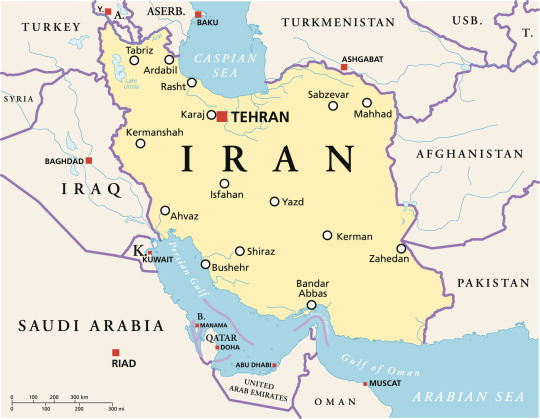
Below:The iranian archaeological site and necropolis Naqsh-e Rostam, located about 13 km northwest of Persepolis, in Fars Province, Iran.
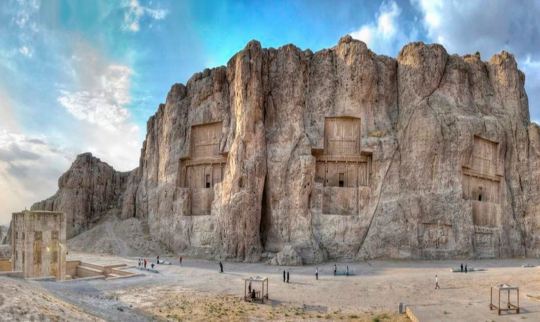
Below:Illustration based on Persian Infantry. Source: Wargames:Immortals-persian-Infantry
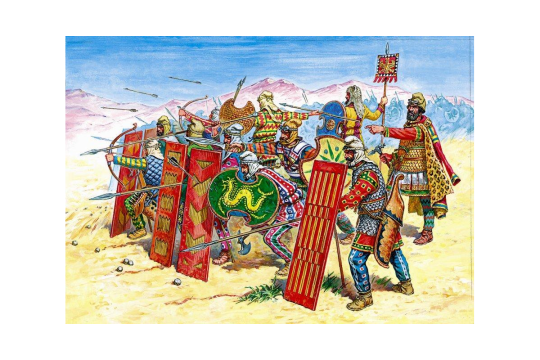
Chogha Zanbil(Persian: چغازنبيل; Elamite: Al Untas Napirisa).It’s a ziggurat,made by the ancient Elamites,located in the Khuzestan province of Iran.
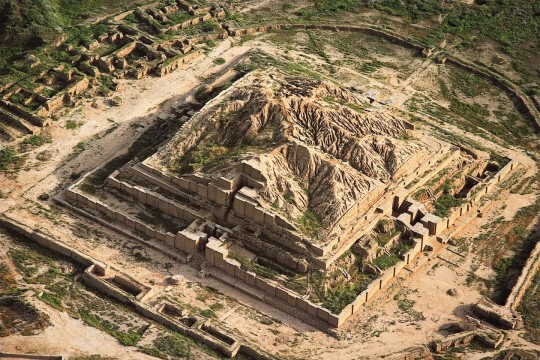
As fans of the Marvel Universe, we appreciate the effort put into creating such a comprehensive guide, but we also recognize the importance of inclusivity and representation.
We hope that future editions of the Atlas will rectify this oversight and shine a spotlight on the diverse landscapes and peoples of Iran, enriching the Marvel Universe even further.
The persian/iranian faravahar:
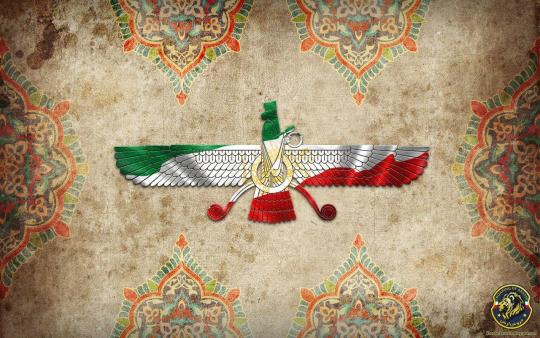
A vital lesson of history is the Biblical magi(plural for Magus):The distinguished wise men who journeyed form lands of the East to visit Jesus after his birth, bearing gifts of gold, frankincense, and myrrh in homage to his birth.
"After Jesus was born in Bethlehem in Judea, during the time of King Herod, Magi from the east came to Jerusalem and asked, “Where is the one who has been born king of the Jews? We saw his star when it rose and have come to worship him.” (Matthew 2:1-2)
Below: The Three Magi, Byzantine mosaic, c. 565, Basilica of Sant'Apollinare Nuovo, Ravenna, Italy (restored during the 19th century). As here, Byzantine art usually depicts the Magi in Persian clothing, which includes breeches, capes, and Phrygian caps.
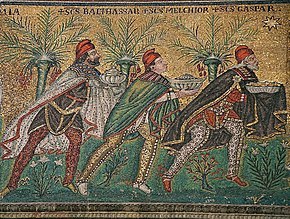
Their identities,and their exact number is a mystery.However prominent figures within the Christianity; they are venerated as saints or even martyrs in many Christians communities, and are the subject of numerous artworks, legends, and customs. Both secular and Christian observers have noted that the Magi popularly serve as a canvas for various ideas, symbols, and creative interpretations
There are legends and narrations bout the prominent three*:
Caspar or Gaspar (and several other Greek or Latin variants such as Gathaspa,[6] Jaspar, Jaspas, etc.)from India .
Melchior (Melichior,[6] Melchyor) from Persia(todays Iran)
Balthasar (Bithisarea,[6] Balthassar) from Arabia.
In the meantime, let's continue to celebrate the MARVEL Atlas for its expansive scope and immersive storytelling, while also advocating for greater diversity and inclusion in our favorite fictional worlds. Excelsior! 🚀📖
*: These names apparently derive from a Greek manuscript probably composed in Alexandria around 500 CE, and which has been translated into Latin with the title Excerpta Latina Barbari.[6] Another Greek document from the 8th century, of presumed Irish origin and translated into Latin with the title Collectanea et Flores, continues the tradition of three kings and their names and gives additional details.
#MARVEL Atlas#MARVEL#archaeology#Ancient Persia#Iran#ایران#Iran Naqsh-e Rostam#نقش رستم#Ancient Iranian Rock reliefs#Achaemenid Empire#Iran Chogha Zanbil#چغازنبيل#ancient ziggurat#Representation Matters#inclusivity#Zoroastrinism#Mazdayasna#فَرْوَهَر#culture#Excelsior#comics#Faravahar#Ahoura Mazda#Biblical Magi#Mathew Gospel#Jesus Christ#The Three Magi#Alexadria
1 note
·
View note
Text

The Star of Bethlehem, Edward Burne-Jones, between 1885 and 1890
#Advent#Christmas#Christmas Eve#art#art history#Edward Burne-Jones#religious art#Biblical art#Christian art#New Testament#Gospels#Gospel of Matthew#Adoration of the Magi#Pre-Raphaelite#Pre-Raphaelite Brotherhood#pre-raphaelisme#British art#English art#19th century art#Victorian period#Victorian art#watercolor#Birmingham Museum and Art Gallery
229 notes
·
View notes
Text
Reading Magi be like
What i expected : fun adventures, amazing action sequences, interesting characters and world
What i get : racism, kingdom politics, slavery, biblical references (i mean aladdin is technically the son of god in their universe), determinism, battle of ideologies, wars, the nature of human conflicts and suffering, hopes vs despair, fun adventures, amazing action sequences, interesting characters and world
#magi the labyrinth of magic#not to mention aladdin has power to make miracle happens and see what other cant#aladdin magi#i thought its just a silly fun manga#magi#magi manga#read magi if you havent#pls pls pls
89 notes
·
View notes